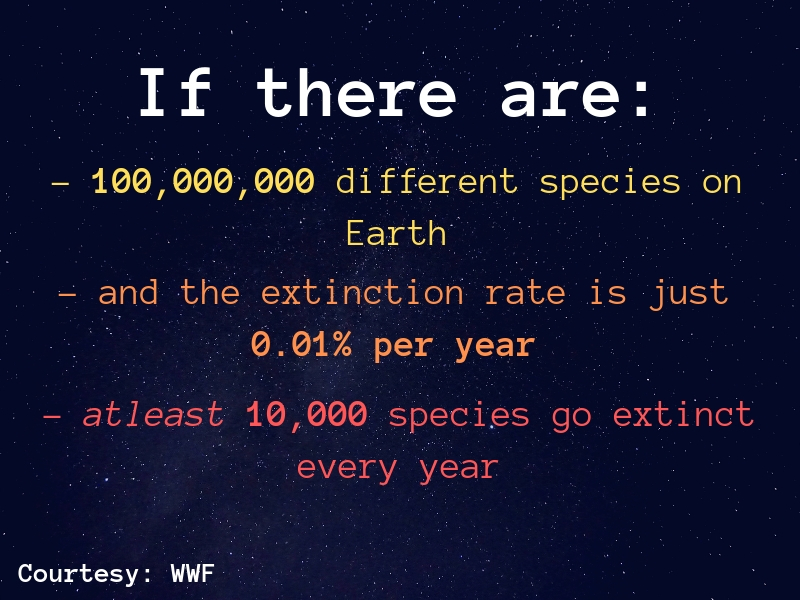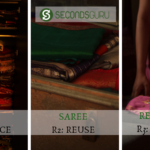Published 21 April 2019 ● Last Updated on 17 July 2020
And we are all connected to each other
In a circle, in a hoop that never ends
How high will the sycamore grow?
If you cut it down, then you’ll never know
– Colours of the Wind (Pocahontas, 1995)
As I sat down to research and put together the article, this song kept playing in my mind because each line cannot be truer than it is today. The mindless destruction of Nature that has happened over the last few decades, just to fulfil human need and very often greed, is a mistake that we are already beginning to pay a heavy price for. We have reached a stage where if we do not ACT NOW; we won’t have much left to act for.
What is Earth Day?
Every year we celebrate EARTH DAY on 22nd April to mark the anniversary of what was known as a ‘modern environmental movement’ in 1970. The history of this day shows us that concerned citizens came together to make environment their business and worked on spreading awareness among the public about relevant environmental issues that concerned them at the time. Today, this is a global event where ‘more than 1 billion people in 192 countries now take part in what is the largest civic-focused day of action in the world.’
Each year, an environmental concern that needs attention is chosen as the theme for Earth Day and allows the movement to take united action and spread awareness about the same. In 2018, the focus was to End Plastic Pollution, a growing menace in our world today and individuals across the globe were encouraged to reduce their plastic waste.
This year’s theme is Protect Our Species with special focus on bees, giraffes, coral reefs, elephants, whales and insects. It is important to understand what the causes are for decline in numbers and why it should concern us. To put the declining numbers in perspective, here is some scientific analysis done by WWF.

The not-so-shocking part is that one single species is wholly responsible for what scientists are now calling the 6th extinction crisis. No prizes for guessing which one! (Want to know more about the 6th extinction? This article by the Guardian here explains it very succinctly.) We’re in the middle of a very serious biodiversity emergency and it’s time we started to take responsibility for our actions.
5 TED Talks that focuses on ‘Protect Our Species’
We’ve put together this list of 5 TED Talks that will help us get a better understanding of the ‘disappearing act’ that is happening in some species. These experts share with us why these species are an important part of our biodiversity and what is causing the alarming rate of decline in them. Needless to say, they all agree on one thing – the one species that will be affected the most by this loss of others is the Homo sapiens – the species responsible for it all!
- Marla Spivak, a bees’ scholar, takes us through the fascinating world of honeybees – the pollinators for one third of the world’s crops. Variety of changes such as synthetic fertilizers and pesticides, no flower landscapes, monocultures and disease parasites are affecting these tiny creatures and we really can’t afford to lose them!
- Kristen Marhaver, a coral reef biologist, tells us that corals are actually ‘badasses’ – they can go through tremendous trauma and still fully recover. All they need is a chance and that is the second best time to protect a reef is RIGHT NOW!
- Asha de Vos, a protector of the whales, believes that these giant mammals are ecosystem engineers as they maintain the stability and health of our oceans. Would you believe me if I said whale ‘poop’ is beneficial for marine biodiversity? I thought not! Well, watch the expert and learn more.
- Brad Spanbauer, Associate Lecturer – Biology Department and Campus Sustainability Coordinator at University of Wisconsin Oshkosh, shares with us man’s story of greed for ivory and how it is leading to the fast disappearing of the gentle giant on land – the elephants.
While I couldn’t find any talk dedicated to Giraffes (I hope TED Talks will take notice and get in the expert!) when it came to insects hear Marlene Zuk’s funny and enlightening talk about why we need them, how fascinating these bugs can be and how creative they get when it comes to sex or this TED ED lesson that tells us how millions of insects are actually classified by just 5 mouthparts!
- Hope is something that keeps us going and I thought it would be appropriate that the last video gave us exactly that! While it is essential that we do whatever we can to save the species that we have today, with all the scientific advancement that is happening around us there is hope that maybe we can bring back some of the species that we have lost. Environmentalist Stewart Brand introduces to us the concept of ‘de extinction’ and how scientists across the globe are working to make it a reality.
What better way to end, than the way I started; the song is still stuck in my head…
You can own the Earth and still,
All you’ll own is earth until
You can paint with all the colours of the wind
– Colours of the Wind (Pocahontas, 1995)
Featured Image credit : Karthik Ramanathan.



0 Comments